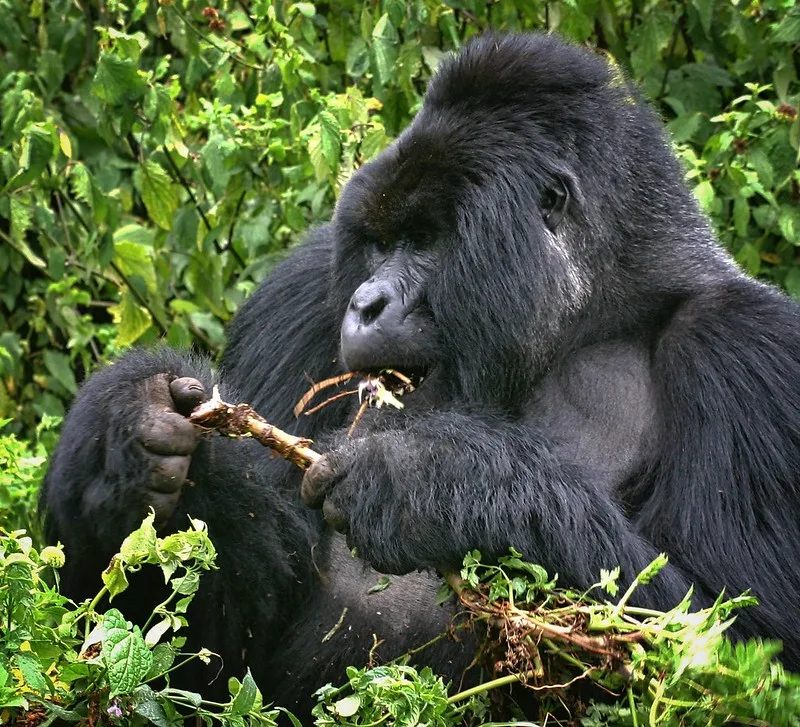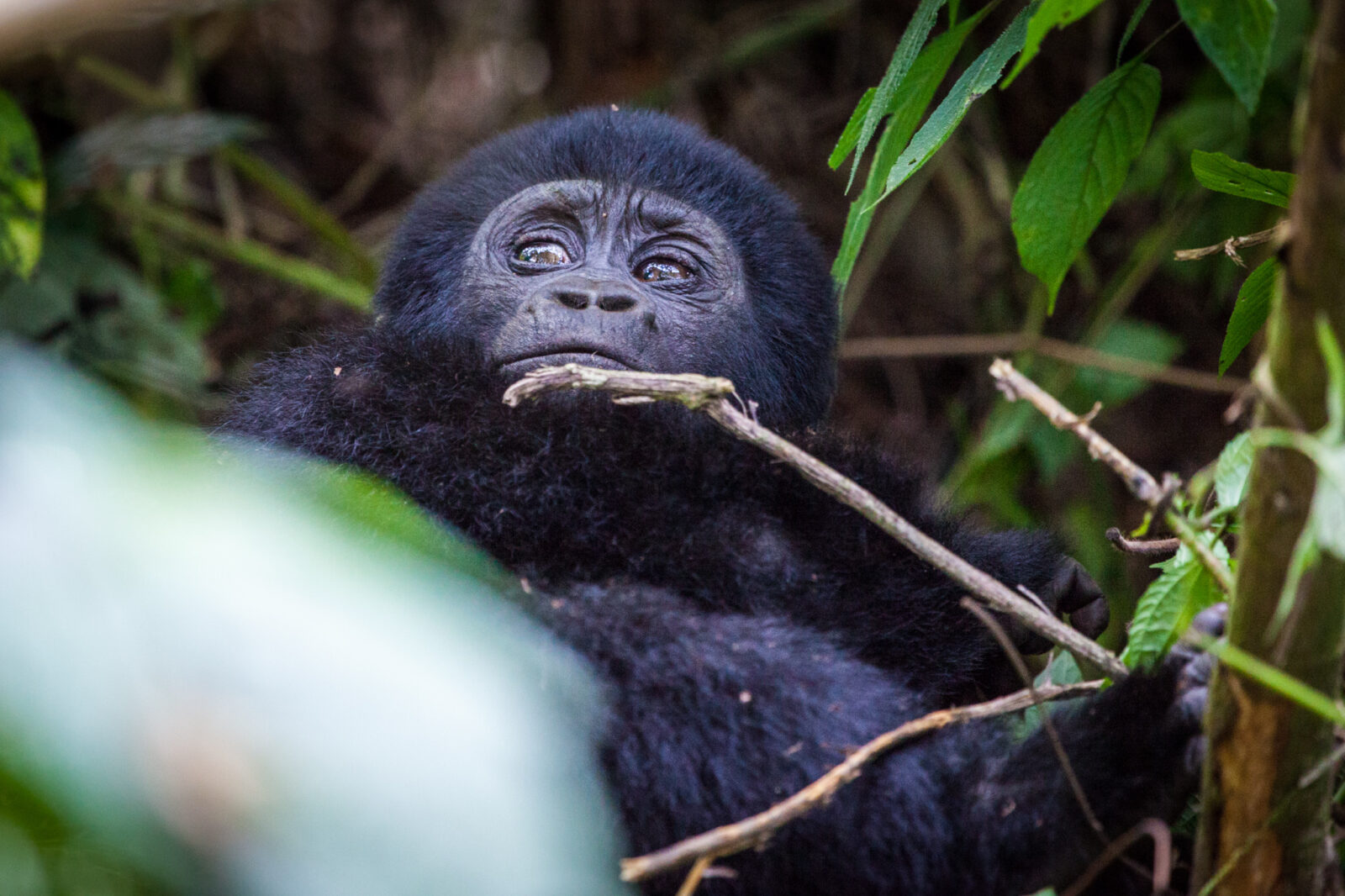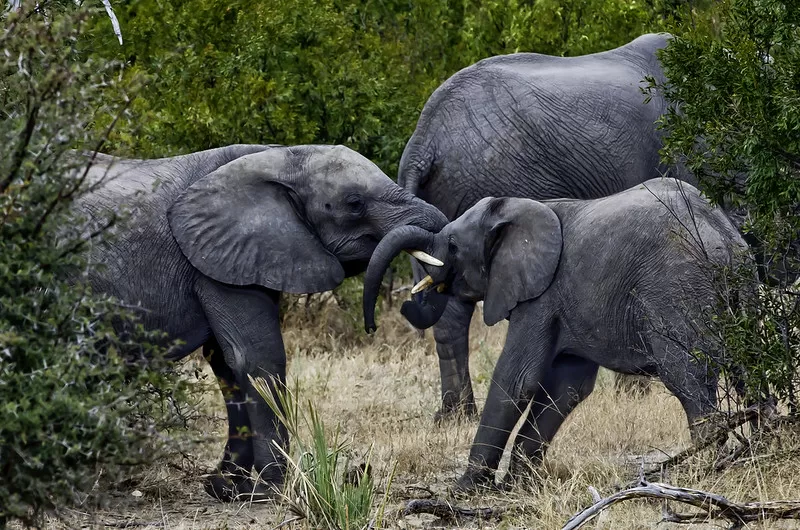vegetation sampling is the random numbers table-gorilla tracking.
The random numbers table is the foundation and curse of vegetation sampling. This innovative idea guarantees that the researcher dose not somehow add biassed factors into the study inside the mathematically determined main sample region. So we methodically lay down five straight transect lines with string every thirty meters within each quad.
We owned far we traveled down that string and how far we turned either left or right to locate our nested 100-10, 1-square meter sample plots, but we were limited by the random numbers table. And it was dictator as well. We had returned from a dangerous plunge into a ravine no sooner than the following magic number would call for us to descend over the same precipice.
This odd series also seems to ensure repeat passes over particularly bad areas of elephant’s nettle development. At moments like this, only Amy’s great dedication to quality research over whelmed Bills overwhelming want to sample some else more welcoming.
Midway in June, we finished vegetation sampling. We had many days in a run of strong afternoon storms; the severe rainy season was closing with a fury. We resolved on our final day to start early and, if at all possible, finish by midday. We were on time when an unusual flash of lightning announced the beginning of an hour-long hail assault.
![]()
As they tore much of the surrounding flora, the marble-sized ice balls hurt our exposed hands and heads. We were dazely standing in icy water by the time we completed our final tests, but we were still conscious enough to know we were both in early hypothermia stages. Given our bad mental state and great physical condition, our answer to the dilemma—pack our bags and run back up the mountains—made logical.
Our half hour descent became a ten-minute uphill return run that warmed our legs and left us almost mad with laughter as we pulled up about fifty yards below our cabin. We kept going till a weird, deep tearing sound stopped us. We held hands. The sound became a ror as a massive Hagenia tore its roots from the ground and rushed for our moss that smashed through our roof, almost halfing our house.
Five minutes earlier, we would have been pulling off our wet clothing precisely where the colossus rested at the side of our bed. Rather, we worked all day chopping down the tree, rebuilding a few important wooden frame parts, and putting fresh corrugate tin panels in place. Among the few benefits of living in a tin hut is its simplicity of maintenance.
One startling revelation regarding the virunga habitat came from OUR sampling. We searched over 1,500 plots for not one Hagenia seedling. From the park border at 8,800 feet up to the treeline at 10,700 feet, mature Hagenia were quite common.
But the biggest living form and one of just two main species in the whole park, there was scant indication of any re-generation of this virunga behemoth. Although they ate little of the tree, gorillas scaled its sloping trunk to consume its profusion of lichens and ferns. Of course, birds, squirrels, hyrax, and many other species found food and cover from the tree.
Though typically from the fallen trunks of dead trees, we did find some indications of regeneration outside of our sample locations. We also know of one little sapling patch in a damaged region close to the park border. Though it was not conclusive, our discovery begged major concerns regarding karisoke’s ongoing usage of Hagenia as its main source of firewood-a habit that stopped a few years later when Sandy Harcourt took over as director of the station.
According to AMY’s SEVENTEEN MONTHS of study, the Virunga gorillas chose rather selectively from among more than one hundred different food varieties. Whenever feasible, they deliberately sought variation in their diet and favored more nutrient-dense, better quality meals. During one-third of the year, their diet consisted mostly of bamboo shoots.
Apart from bamboo, most of their meals were somewhat widely distributed and plentiful. Although group 5 seldom visited several sites with great food values, they seemed to be really important.Apparently, they didn’t have to pay them visits. The gorillas lived in a large salad bowl with plenty of varied, healthy meals still on available.
This ending defied both common wisdom and our expectations. A rising number of authors and environmentalists were already sending the mountain gorillas to the trashbin of evolutionary history, or to a limited life of cage breeding, citing their low numbers and lack of habitat. Fossey herself freely discussed their approaching extinction.
Ian Redmond had informed us that he thought our job “was to record all that we could about the gorillas lives and behavior before they disappeared.” Though Ian and Dian were as dedicated to the gorillas as anybody could possibly be, we felt that our main focus should be on saving the mountain gorilla rather than recording its extinction.
Our studies showed that the gorillas have numbers and may be growing. Later demographic studies would demonstrate that the population even had the reproductive capacity to rebound to Schaller’s level of four hundred to five hundred gorillas. We were resolved to use this fresh data to support a good argument for wild mountain gorilla protection.
Still, several issues dogged the salad bowl utopia. Poaching kept us thinking throughout our time at Karisoke. Constant sneezing and sniffling of gorillas who no longer had a lower elevation sanctuary from times of heavy rain and cold interspersed the lengthy rainy season of 1979. And on their woodland coast, the swelling tide of people lapped progressively higher. The gorillas would be overrun without a strong political support dike.
Pucked and tucked away were brothers. But it was before Puck became pregnant. Group 4 dominated all of the research from the moment Dian Fossey started working in Karisoke in 1969. Other surrounding groups were under observation for abnormal movement, membership, and interactions. Only in the middle of the 1970s, however, did any thorough investigation on GROUP 5 start under Sandy Harcourt’s direction using data from both Groups 4 and 5 for his behavioral study at Karisoke.
Group 5 was once again allowed to be periodically watched till our arrival in 1978 when Sandy departed Karisoke to finish his PhD at Cambridge University.Dian provided us a family composition list for group five at that time, but some questions over some of the twelve named people arose.
Amy soon found that the family consisted in fact in fourteen, two silver back males, Beethoven and icarus, four adult females-Effie, Marchessa, Pantsy and Liza; two black back (eight-to ten-year-old) males –ziz and Puck; three younger males –Tuck, Pablo and Shinda; three younger female – quince, poppy and Muraha.
Except for Quince’s death and Liza’s relocation, this system was somewhat steady during our stay at Karisoke until November 14, 1978, when things altered drastically. Amy was sitting at our desk catching up on transcribing her field notes when David Watts knocked and entered. She had taken two days.



